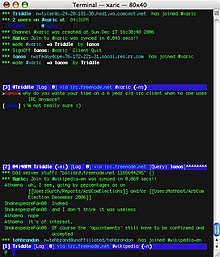World Wide Web
The World Wide Web (abbreviated as WWW or W3[2] and commonly known as the Web), is a system of interlinked hypertext documents accessed via the Internet. With a web browser, one can view web pages that may contain text, images, videos, and other multimedia and navigate between them viahyperlinks. Using concepts from earlier hypertext systems, British engineer and computer scientist Sir Tim Berners-Lee, now living in Lexington, MA as the Director of the World Wide Web Consortium, wrote a proposal in March 1989 for what would eventually become the World Wide Web.[1] At CERN in Geneva, Switzerland, Berners-Lee and Belgian computer scientist Robert Cailliau proposed in 1990 to use "HyperText ... to link and access information of various kinds as a web of nodes in which the user can browse at will",[3] and publicly introduced the project in December.[4]
"The World-Wide Web was developed to be a pool of human knowledge, and human culture, which would allow collaborators in remote sites to share their ideas and all aspects of a common project."[5];from wikipedia
A web browser is a software application for retrieving, presenting, and traversing information resources on the World Wide Web. Examples of Web browsers: Internet Explorer, Netscape Navigator, Opera, Safari, Godzilla
A web search engine is designed to search for information on the World Wide Web and FTP servers. The information may consist of web pages, images, information and other types of files. Example of search engines: Yahoo, Google, Alta Vista, Hot Bot

